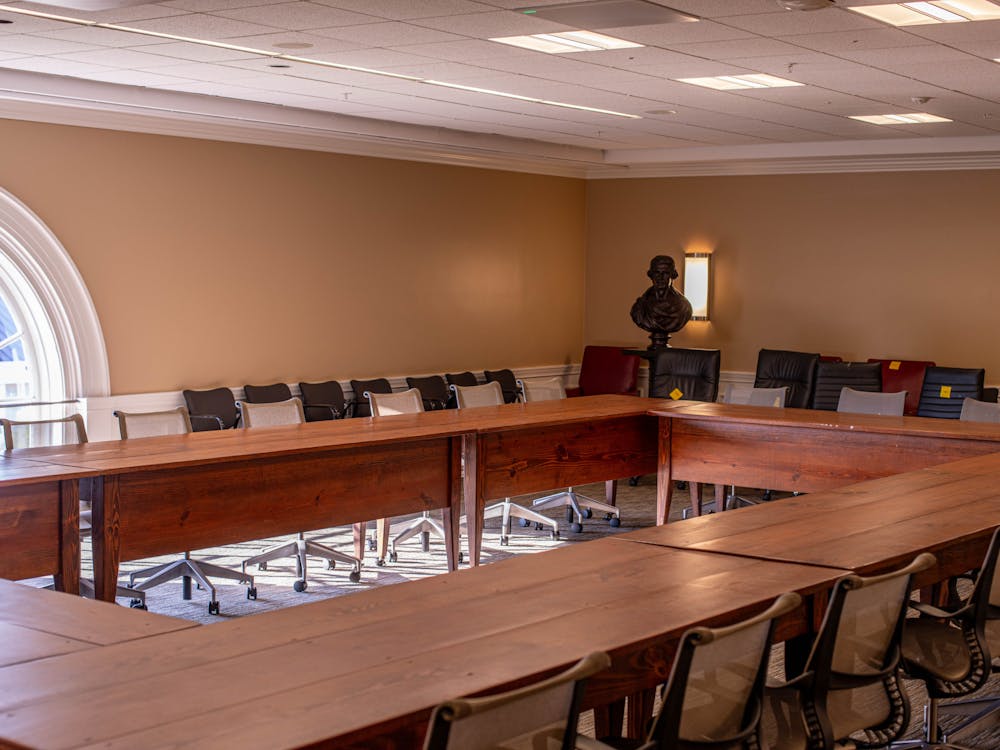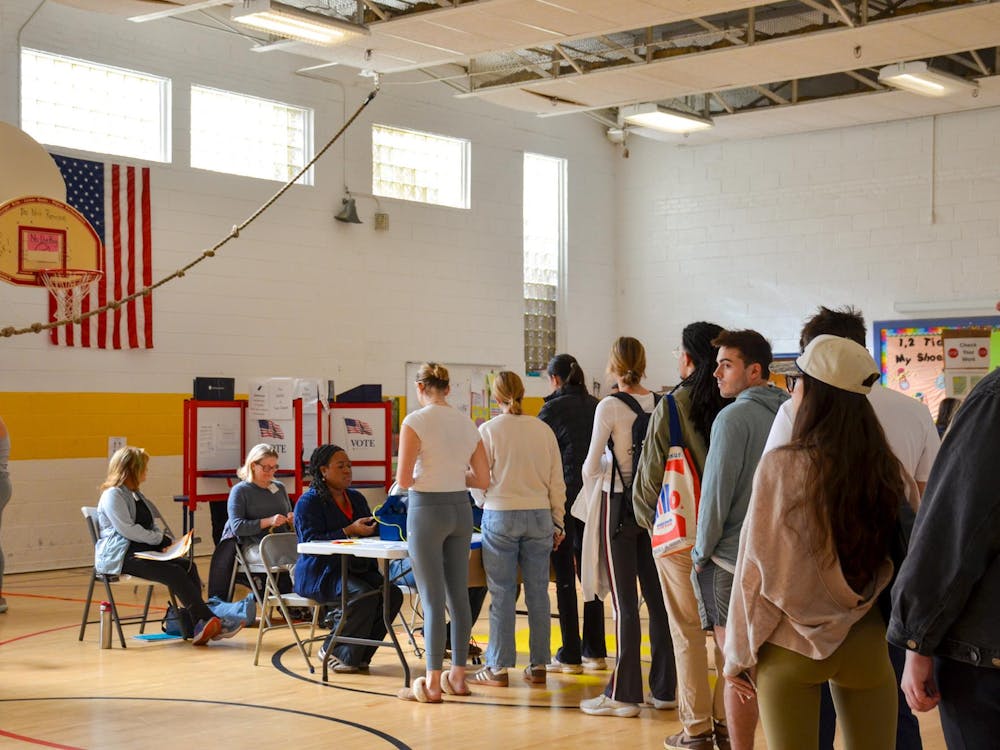As taps wafted across the Amphitheater, students rose from their academic pursuits as cadets saluted in remembrance of prisoners of war and those missing in action.
The three ROTC battalions on Grounds assembled yesterday at the Amphitheater to honor the nearly 90,000 American servicemen unaccounted for in the last three major wars. The annual 24-hour vigil hosted by the Air Force ROTC battalion and Arnold Air Society culminated with a 21-gun salute.
Friday, Sept. 19, is National POW/MIA Recognition Day.
More than 78,000 of the servicemen who served in World War II remain officially missing in action, as do 8,197 soldiers from the Korean War, according to Defense POW/Missing Personnel Office statistics.
Of the 1,882 servicemen who served in the Vietnam War and remain missing in action, 48 are Virginians, according to statistics released last week by the National League of Families of American Prisoners and those missing in Southeast Asia.
John Gurr served as the vigil's guest speaker. He is a 1959 West Point graduate who served three tours of duty in Vietnam between 1961 and 1971 and now, on occasion, serves as a guest lecturer at the University.
"The heroic legacy of our fighting men and women ... soon will pass to you," Gurr told the assembled cadets. "Be ready."
In his remarks, Gurr recounted the story of his West Point classmate, Army Capt. Humbert "Rocky" Versace, who was taken captive in Vietnam and encouraged camp resistance to North Vietnamese coercion efforts. After attempting escape four times during his 23 month captivity, he was executed.
Versace was posthumously awarded the Congressional Medal of Honor at a White House ceremony in July 2002, becoming the only Army soldier to receive the distinction for resistance action during captivity.
"These types of sacrifice we honored today allow this University to continue to function in this country," said Colonel John Vrba, head of the University's Air Force ROTC program.
Recovering the remains of soldiers is a high priority for the federal government, according to the U.S. Army.
"We make a promise to a soldier that we will bring them home," said Shari Lawrence, deputy public affairs officer at the Army Personnel Command in Alexandria, Va. "Sometimes it takes years and years to do that."
In 1988, Army archeologists exhumed the bodies of 28 American soldiers killed during the War of 1812 from a gravesite in Canada. Their remains were reburied with full military honors in New York.
"We are the only nation in the world that has a laboratory dedicated to doing this," Lawrence said.
Excavation crews from the U.S. Army Central Identification Laboratory, Hawaii regularly are deployed 360 days annually to the jungles of New Guinea and Cambodia armed with "bio-sketches" of missing servicemen. Each year 30 to 40 samples of remains found and repatriated are sent to the DNA Identification Lab in Rockville, Md.
"It's important to remember history, to remember events in the past that may affect our future," said second-year College student and ceremony onlooker Amy Platte, whose grandfather was a prisoner of war during World War II.






